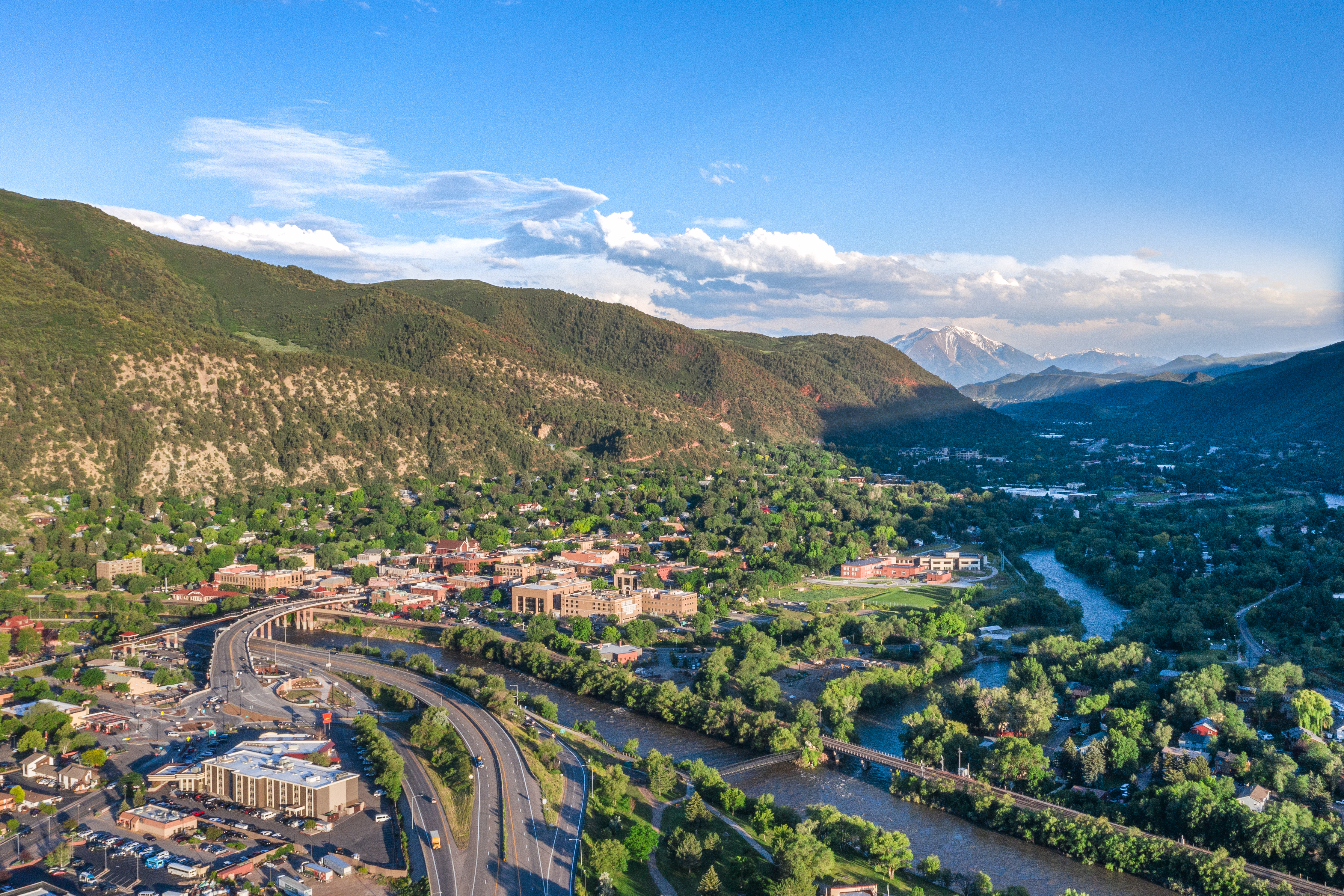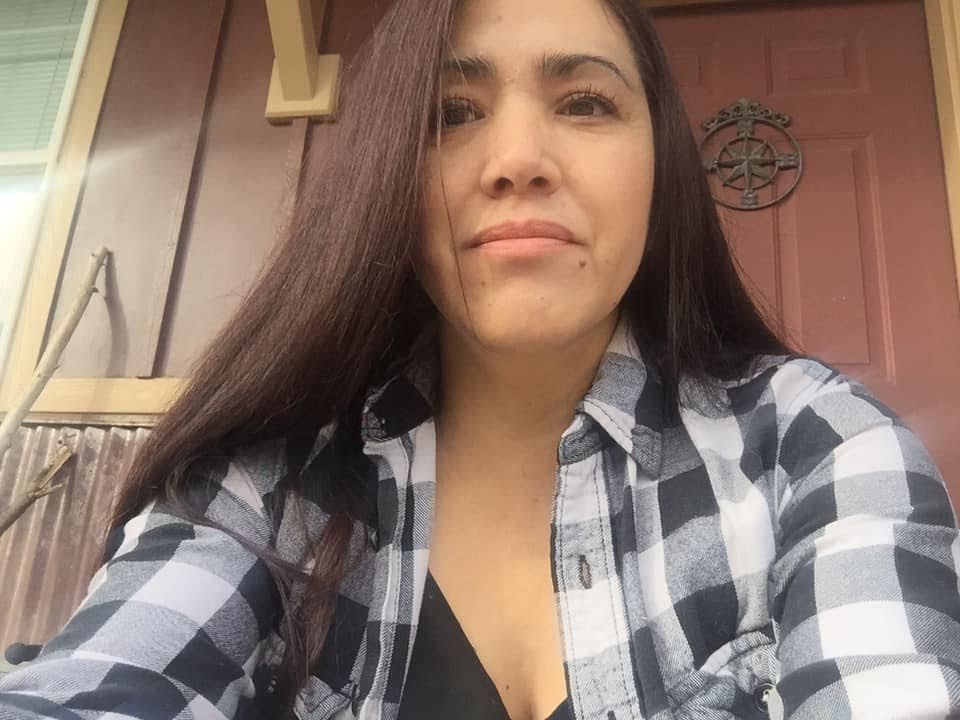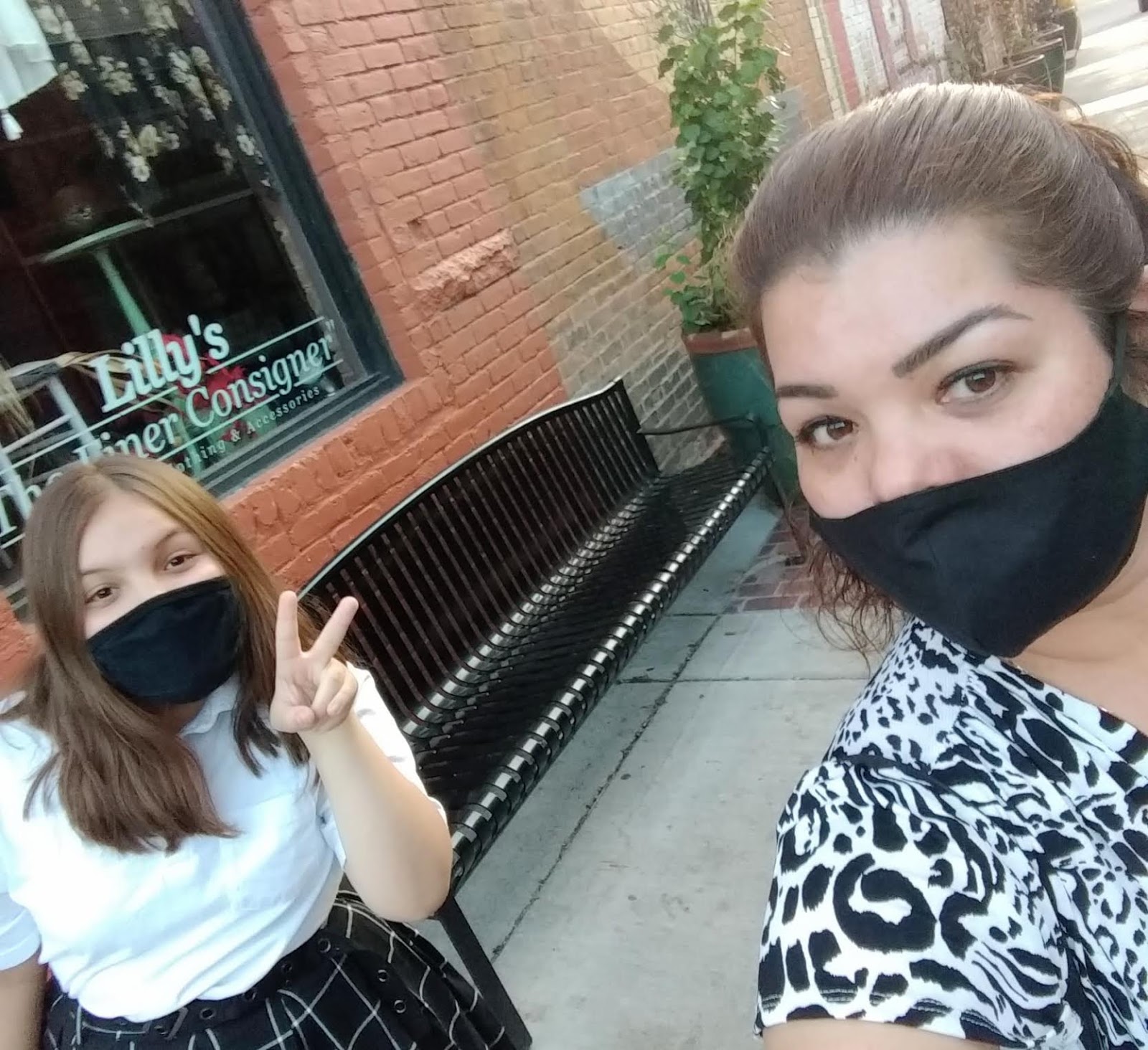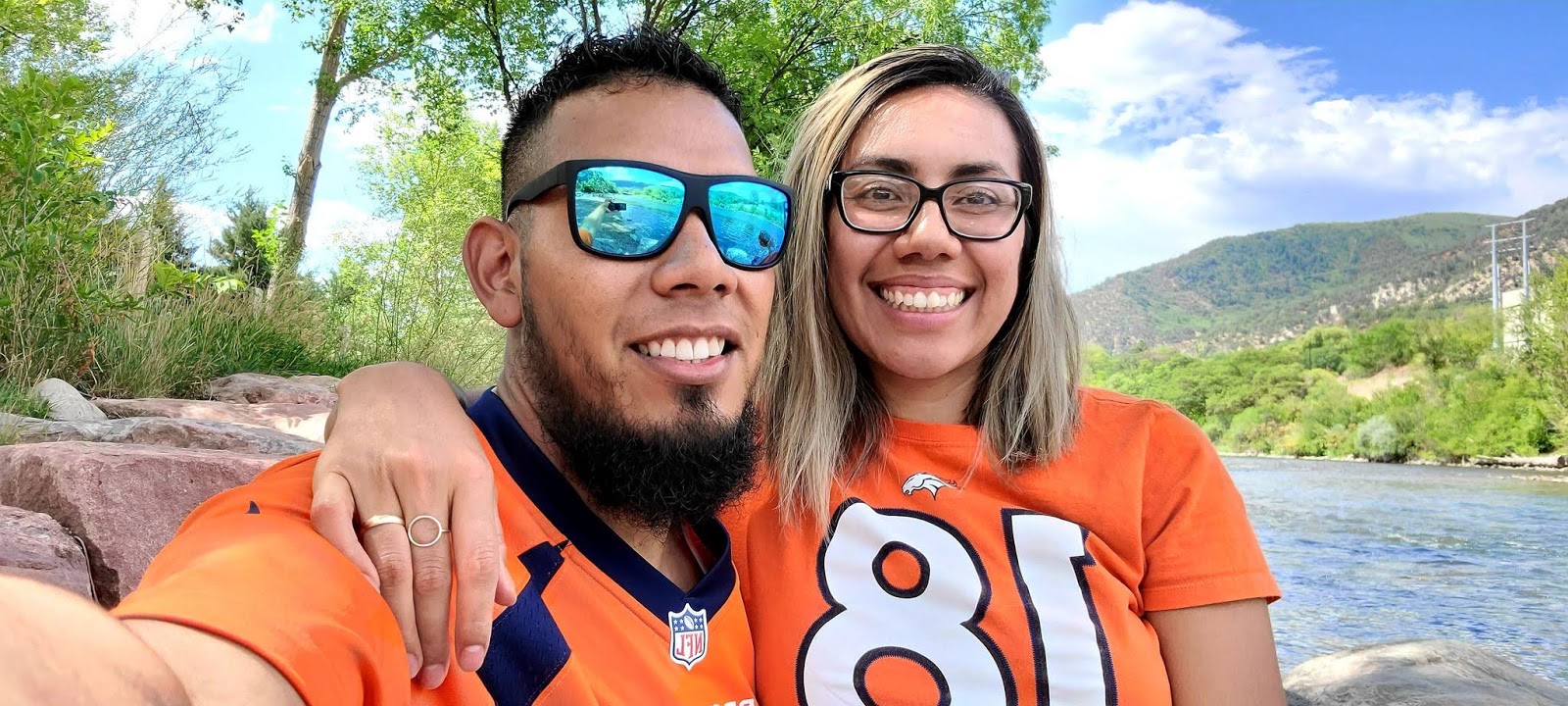
Story
Me Ha Afectado Mucho
Living Through the Pandemic in Colorado’s High Country
Documenting the Covid-19 pandemic among the Latino immigrant community of the Roaring Fork Valley.
It’s no secret that Covid-19 will be remembered as a story of enormous health inequity and invisibility.
As the worldwide pandemic claimed millions of lives, it is those who experienced underlying health issues, lack of access to resources, and those forced to choose between a paycheck and health recommendations that have been the most likely to have contracted, become seriously ill, and die from the coronavirus. In Colorado, the statistics bear out these very trends. And Latinos, making up about a quarter of the state’s population, are the largest ethnic group disproportionately affected by the virus. According to the Centers for Disease Control and Prevention, as of December 2020, 54.8% of persons diagnosed with Covid-19 are among the Latino community in the city of Denver alone.

Aerial view of the Town of Glenwood Springs, Colorado in the Roaring Fork Valley and the Grand Avenue Bridge going over the Colorado River.
The state’s recent immigrant Latino communities are present throughout the state in both urban and rural populations. For History Colorado's History in the Making Covid-19 collecting initiative—with support from the National Endowment for the Humanities Coronavirus Aid, Relief, and Economic Security (CARES) Act—community engagement staff were able to connect quickly with one rural Colorado Latino community to ensure those stories would not be forgotten.
The Roaring Fork region is located in west central Colorado. Known for its access to tourist destinations like Aspen and Glenwood Springs, the region is home to growing immigrant Latino communities, many of whom service the resort town economies. One such community, Basalt, has seen its school population grow to be more than half Latino in its student body. However, integration into majority-Anglo communities has not been particularly smooth or easy. For Spanish-dominant households, connecting with local faith and community organizations has provided access to resources, especially during the pandemic.
When Covid-19 hit, it was Samuel Bernal, the host of Radio TriColor, a Spanish-dominant radio station, who was able to quickly pull together resources for the largely immigrant and Spanish-speaking community, and provide information through a Facebook page, live interviews, and connection to mutual aid. His outreach mirrored some of the same ways immigrant communities of the 1918 pandemic banded together to help one another while also facing discrimination and hardships.
In 1918, for instance, large immigrant neighborhoods of Italian and Eastern European Jews relied heavily on in-group communication networks to provide access to information, resources, and to provide a buffer against the negative stereotypes their communities encountered. Acknowledging language barriers was of tantamount importance in learning how to prohibit the spread of the 1918 flu, and many times it was fraternities, faith communities, and ethnic media that stepped in to provide the necessary medical advice. But cultural norms with close-knit communities like the Italians in the early 1900s also played a role in the rapid spread of the virus within that community. Not unlike Latino communities of today, the Italians lived in multi-generational homes and valued close proximity and strong familial ties, even against the caution to stay apart. One Denver Post article explained that “a physician is seldom called, but all relatives and friends immediately flock into the house to call on the sick person.”
Today, immigrant communities continue to rely on communal support for access to resources. However, one of the main challenges facing immigrant families has been deciding whether to quarantine or continue working for a much needed paycheck.
Through History Colorado’s intentional partnership with Samuel Bernal of the Roaring Fork Valley, and with him leading the effort, we have been able to collect fifteen oral histories of Latino families directly impacted by Covid-19. These interviews were collected in the early months of the pandemic and lean into stories of economic uncertainty, living with Covid symptoms, and health impacts. More so, though, the collection is significant as we listen to stories of belonging and community.
We hear about what it means to experience Covid-19 while feeling and being far from loved ones. We learn about what it may be like to access resources as an undocumented person. We can hear first hand about what it’s like to caregive for a longtime Basalt resident living with Alzheimer’s disease, and the complexity of providing care to vulnerable populations while also identifying as part of a vulnerable population oneself. The excerpts from several participants give a glimpse into their individual experiences living through the pandemic:
Sandra Lopez
“Ojalá que todo cambie y sea para bien. Es mucho estrés todo eso. Fíjate que me ha dado mucho sueño pensar tanta cosa. He conocido compañeros que han muerto, inclusive familiares que han muerto de este verdadero coronavirus. Me ha afectado mucho.”
“I hope this changes soon and for the better. This is a lot of stress. I have lost lots of sleep thinking about all this and have gone through a lot of exhaustion. I’ve known friends who have died and also family members who have died of this Coronavirus. It’s affected me a lot.”
Indhira Barrón
“Lo más difícil en estos momentos es tener dos niñas especiales...como mamá soltera tener que seguir a trabajar y traer el virus.”
“The most difficult for me during these times is to have my two daughters with special needs… as a single mother to keep working and possibly bringing home the virus.”
“Mi papel de <<housekeeper>> se convirtió en esencial porque dos de mis patrones son personas mayores y me necesitaban.”
“My work as a housekeeper became essential [work] because both of my bosses are older adults and needed me.”
Kelvin Martinez
“Estudiamos regularmente la palabra de Dios y al raíz de esto sabemos que tendremos altos y bajos y no estaremos en constante problemas”
“We study the word of God regularly and at the root of this we understand that there will be highs and lows and also that we won’t be in constant trouble.”
In the end, these stories will enrich the lives of Colorado residents as we enlarge the record about life in Colorado during Covid-19. What’s important to note is that this collection of, and by, community members is directly born from a relationship between and among History Colorado staff and members and the Roaring Fork community.
As museums seek to do the intentional work of inclusion and belonging while bearing and witnessing history, the question of “whose history are we remembering?” becomes ever more present. And that question begs us to ask ourselves, “who are we in relationships with as historians and as a historian community?”
Here you will find a link to the Basalt-based Covid-19 collection and also the Mujeres Valientes data story, a result of History Colorado’s partnership with the Colorado Latina statewide organization. History Colorado is currently in partnership with Centro Humanitario para los Trabajadores, a Denver-based organization working with low-wage Latino immigrant workers to document and preserve additional histories.
For myself, the work of sharing and preserving immigrant pandemic stories goes beyond an academic or work interest. I’m the great-granddaughter of Adela Cano, a Spanish domestic who died quietly of the 1918 flu while providing childcare services for an elite Baltimore family. Searching for her story and others like it make it all the more clear why these efforts are of paramount importance.
More from The Colorado Magazine
Kitchen Table History, Even When We’re at Different Tables While our holidays this year may be physically distant, we can still find ways—via phone or Zoom—to connect through reminiscing and stories. This actually feels even more important this year if you know elders who are isolating and alone.
“Is America Possible?” The Space Between David Ocelotl Garcia’s and Norman Rockwell’s Freedom of Worship
Immigration to Colorado: Myth and Reality For most of its history, America has been a haven for those seeking a better life and a refuge for those fleeing for their lives. Indeed, since its inception, America has been an inspiration to others, a place where the downtrodden could find hope. Among the proponents of immigration was President John F. Kennedy, who laid out his inclusionary vision of America in his 1958 book, A Nation of Immigrants.



